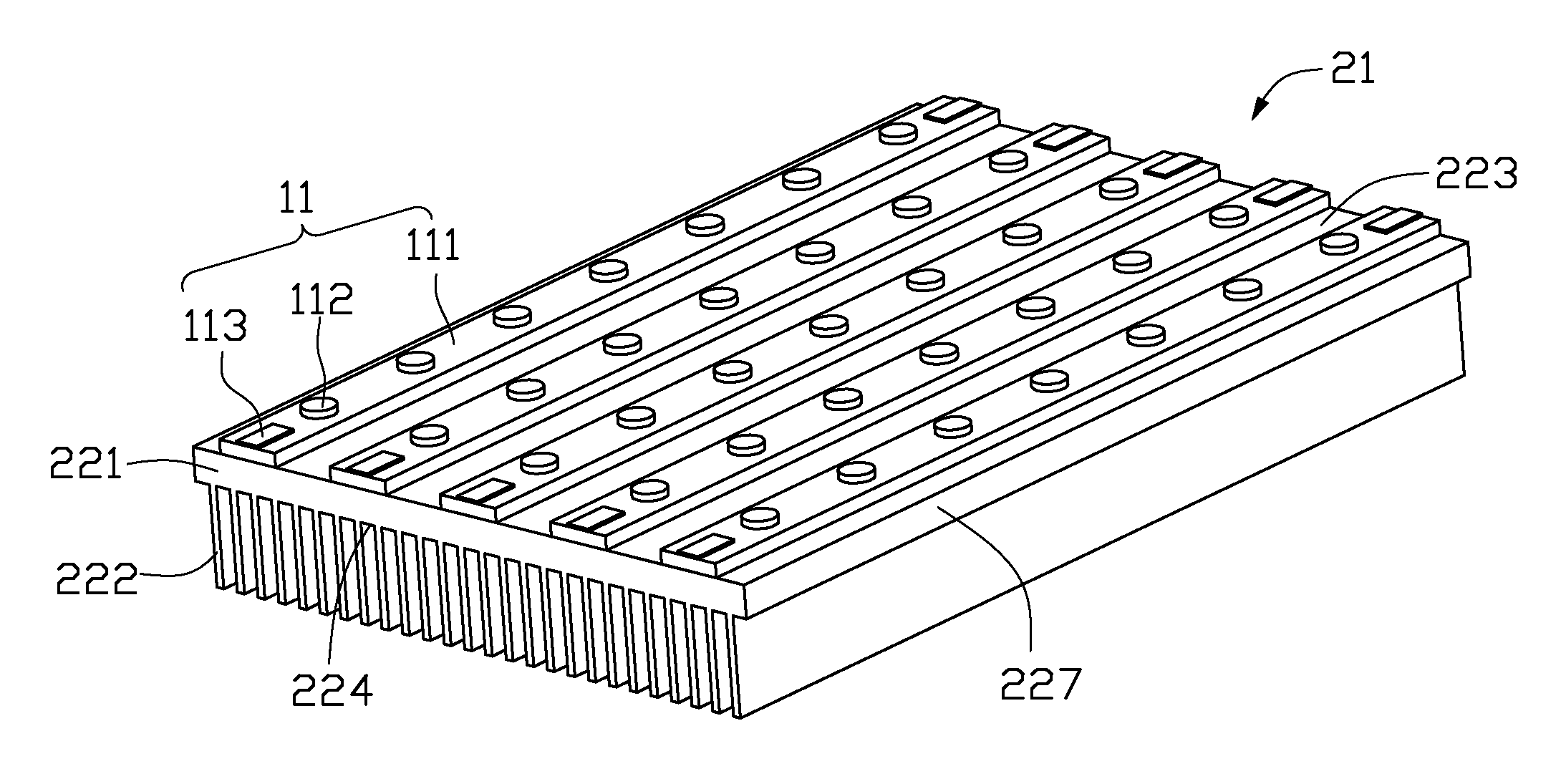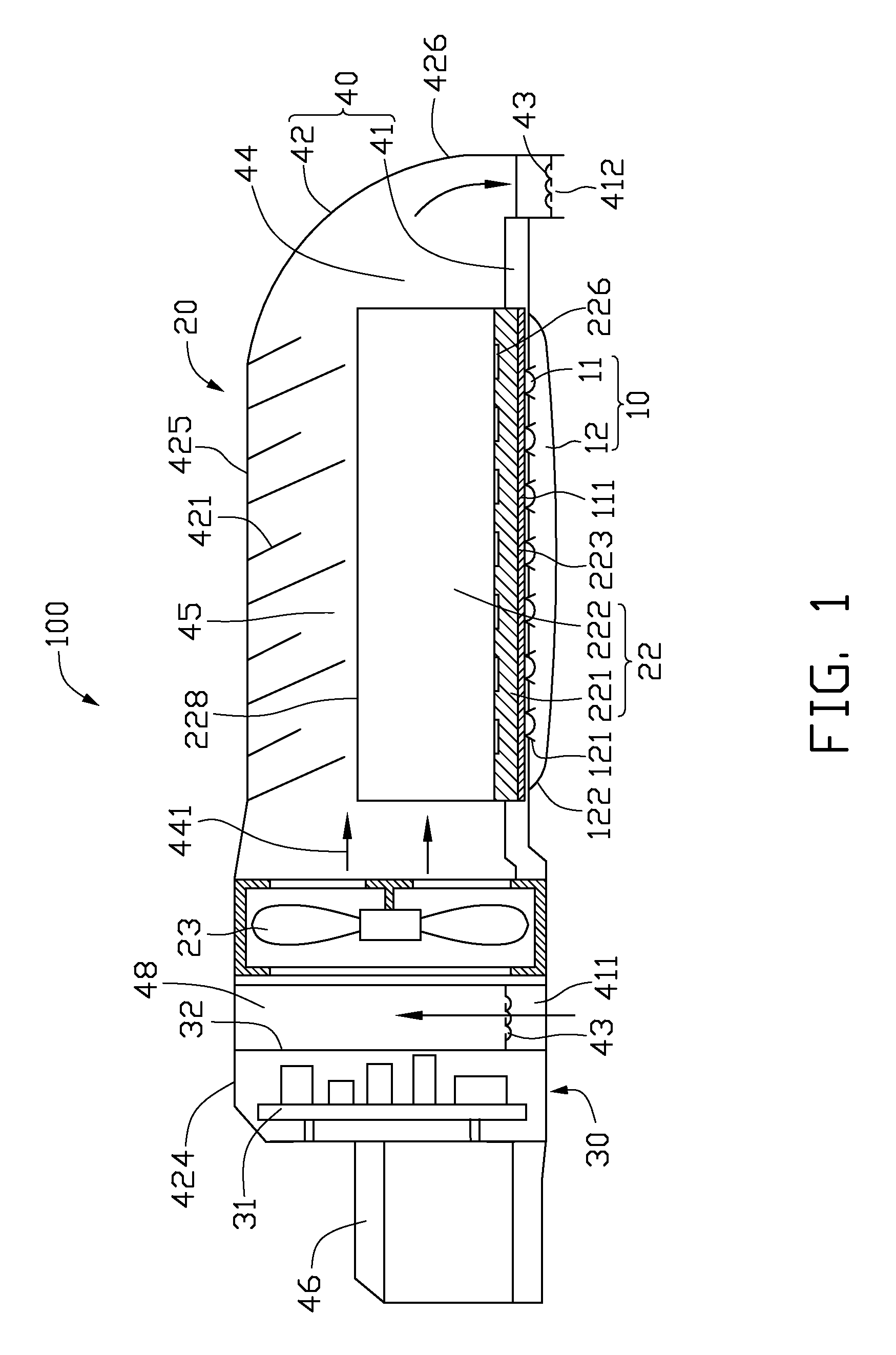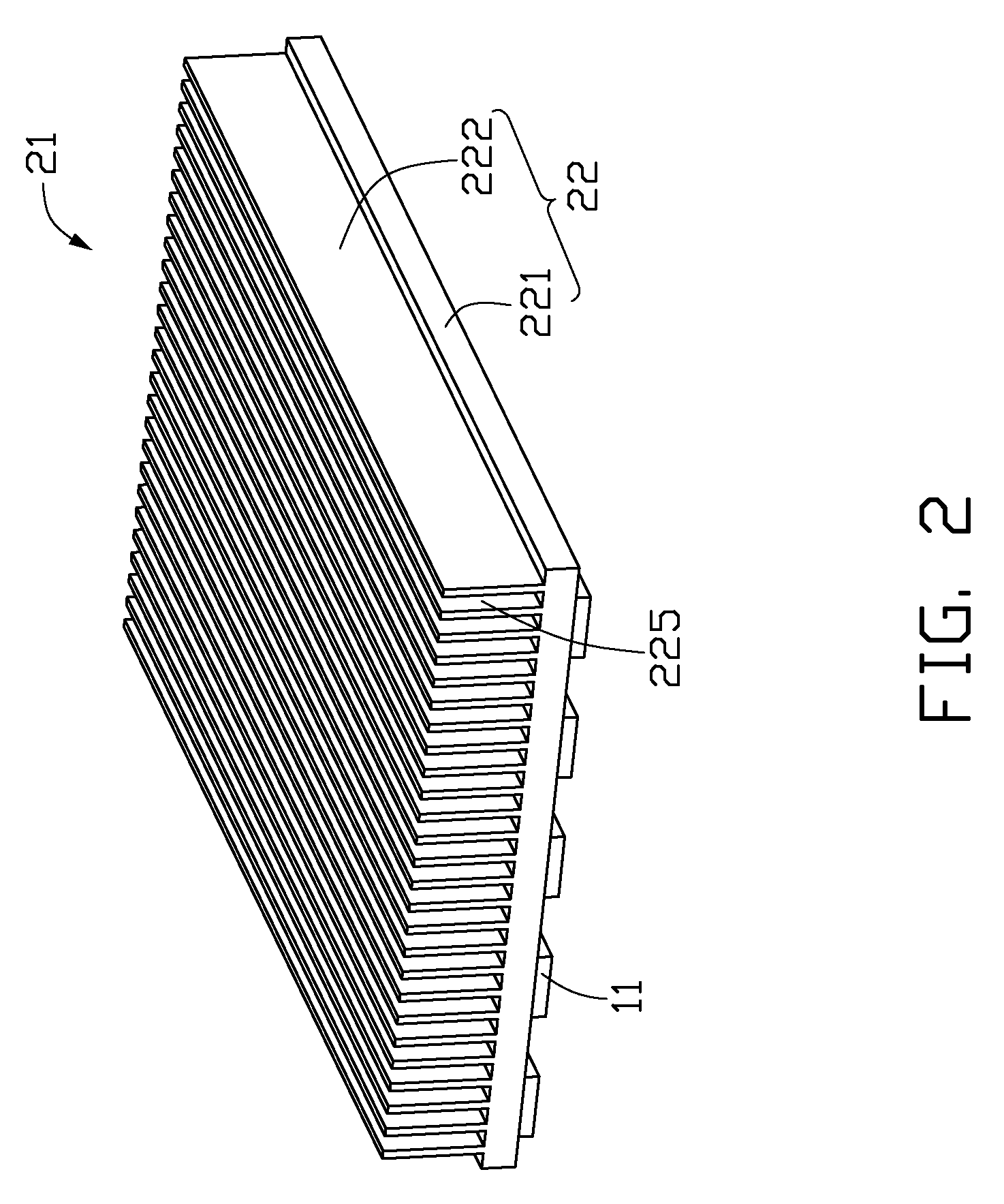LED illumination device
- Summary
- Abstract
- Description
- Claims
- Application Information
AI Technical Summary
Benefits of technology
Problems solved by technology
Method used
Image
Examples
Embodiment Construction
[0016]FIG. 1 is a cross-sectional view of an LED illumination device 100 in accordance with an exemplary embodiment of the present invention. The LED illumination device 100 includes a lamp housing 40, a heat dissipating module 20 received in the lamp housing 40, a light-emitting module 10 received in the lamp housing 40 and arranged under the heat dissipating module 20, and an electrical module 30 located at one end of the lamp housing 40.
[0017]The lamp housing 40 has a front end where the electrical module 30 is located and a rear end opposite to the front end. A connecting head 46 is provided at the front end of the lamp housing 40 so that, for example, when the LED illumination device 100 serves as a street lamp, the LED illumination device 100 can be attached to a lamp post via the connecting head 46. The lamp housing 40 defines therein a chamber 44 for accommodating the heat dissipating module 20 and the light-emitting module 10 therein. The lamp housing 40 includes a lamp bas...
PUM
 Login to View More
Login to View More Abstract
Description
Claims
Application Information
 Login to View More
Login to View More - R&D
- Intellectual Property
- Life Sciences
- Materials
- Tech Scout
- Unparalleled Data Quality
- Higher Quality Content
- 60% Fewer Hallucinations
Browse by: Latest US Patents, China's latest patents, Technical Efficacy Thesaurus, Application Domain, Technology Topic, Popular Technical Reports.
© 2025 PatSnap. All rights reserved.Legal|Privacy policy|Modern Slavery Act Transparency Statement|Sitemap|About US| Contact US: help@patsnap.com



